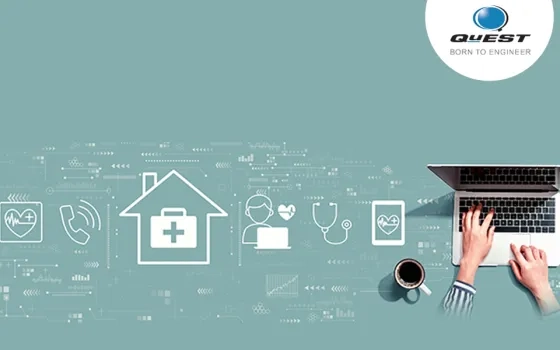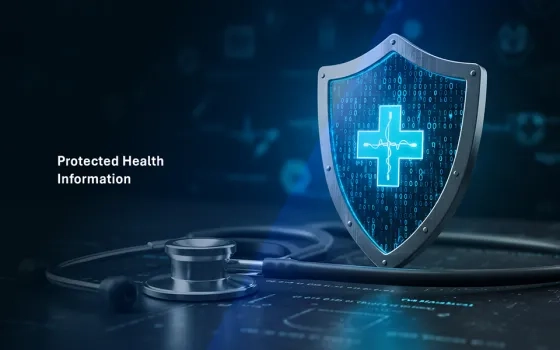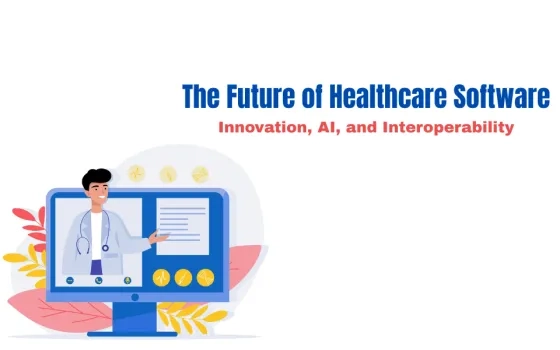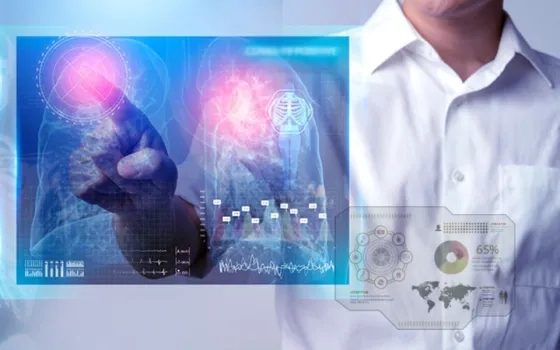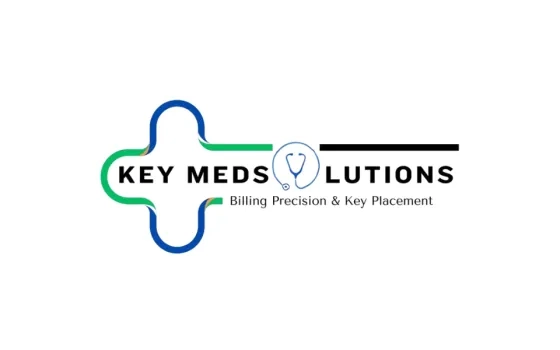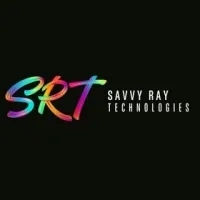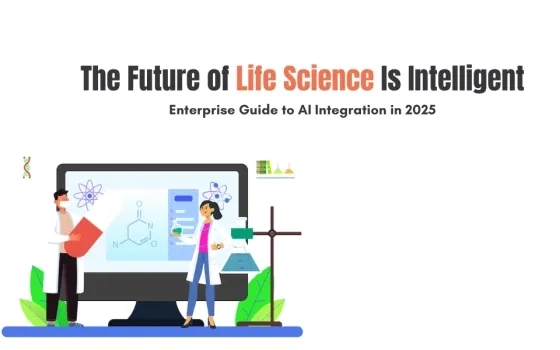Abstract
The article talks about the revolution in Healthcare in the last 2 years (accelerated by Covid) and the ascendency of Digital Health. With the new paradigm comes new Currency (data), Treasury (big tech funds and gig economy), Regulatory reforms (FDA, IEC.), Language (techno-geek talk – API, AI, ML, Cloud, and SAAS), Legislations (Privacy and Health record accessibility) and new age crimes (Cyber villains).
A New Period break: Before Covid and After Covid
Covid-19 has been an inflection point in Healthcare, and it’s not about the wreckage caused by the disease, or the largest experiment in history with the fastest development and deployment of vaccines worldwide. It’s about how digital health has evolved in the last 18 months.
The pandemic has stretched the hospital based systems to breaking point, and at times beyond it. Supply chain for healthcare equipment has been disrupted significantly with steep reductions in diagnostic and surgical procedures for a period, and high need for ventilators and PPE devices. As the demand for ventilators and PPE is being met, a period of complete reversal of needs is simultaneously in motion. Add to this the unpredictable nature of logistics and challenges of shortage of chips. All this has created chaos in the industry. Even before this, there has been a rapid progression in commoditization of hardware in the devices, due to diminishing returns for hardware research investments and product upgrades.
Ascendancy of Digital Health
The big positive has been the rapid evolution of Digital Health. Though the change has been in motion for a few years now, the impact and timeframe was always in question. Healthcare being a laggard in adoption of technology advances was seen in this phase too. Data in Cloud was taboo, AI’s proof was questioned, and technology acceleration was considered unsafe.
With Covid 19, this changed considerably and the first public impact was the almost overnight shift of point of primary care delivery from hospital and clinic to home. Virtual consultations and home based monitoring was enabled rapidly. This was meant to happen once 5G was prevalent, but did not need to wait till then. Wearable devices which were considered fashionable were now considered miniaturized monitors.
The pandemic also led to significant acceleration in cloud adoption across healthcare. There used to be resistance in moving to cloud for patient data, with concerns on security, cost of change, latency, and fear of data being mined. Necessity of cost reduction for IT investments helped make that call. The true technology limits are driving the pace now in still needing hybrid systems, and many governments have made the decision on restrictions about where the data is physically located in public or telecom based cloud solutions.
Covid by itself caused governments around the world to put up funds for researching the disease, rapid diagnostic methods, understanding transmission and contact tracing, and development of genomics based vaccines. The compute capacity used, sharing of information across the world in the research community, coupled with AI and simulations for RNA based vaccine development, helped to start human trials in a matter of months and emergency authorization for deployment within the year. The learning over the past 18 months has accelerated the drug development process by decades.
New Currency and Treasury
The sudden alignment of stars in the digital health enablement universe, has also caused changes in healthcare technology investments significantly. Beyond the trillions of dollars invested in Covid research, Digital health investment in the first half of 2021 closed with $14.7Billion invested across several US digital health deals (Ref 1: Rock Health report). This is the same as the full year investment in 2020, and has been doubling every year in the prior 2 years. Unlike previous years, Series D, exits and unicorns are emerging and it is no longer a bet. This does not account for the R&D investments made by Medical devices companies or large Healthcare EMR providers, who by themselves have shifted most of the future investments to digital. Big tech has also been playing their part in digital health investments or forming partnerships. This along with VCs, CVCs, and incubators are as big a force as the healthcare industry is in terms of investment capability.
Regulatory Reforms
Another major enabler has been the progressiveness shown by regulators to understand and create new approval methods for software only solutions, as in FDA SaMD (Software as Medical Device) and IEC82304 standards. This also created a level playing field for startups and non-healthcare companies to enter the market and have healthcare solutions developed and deployed at a rapid pace. The sudden ease in entry-barriers has also caused existing healthcare technology majors to adopt the pace or partner with startups and SAAS based solution providers. While still not approved for clinical use, regulator sponsored debates are evolving on using fitness device data (not medical device) to aid in diagnosis as health trend data. The primary argument in this case is, “Why ignore the available data if it helps?” vs “Is it safe and will it cause more harm than good?”
New lingo – from Greek, Latin to Techno-Geek
The technical avatar of the digital health era is the emergence of intelligent platforms and ecosystems, and API-based data availability and engineering capability available on these. Healthcare device majors are racing to create such ecosystems, as are Big tech in API based health services. Startups and incubators too are creating such ecosystems, while Hospital systems and EMR majors are figuring out the economics of data and how to safely make these available. The ecosystems are hosted on appliances or cloud based on latency needs. And these includes provisions for using them through API access or fully capable application development environments. Innovation accelerators are also run by majors on such ecosystems.
Applications being developed by the majors, startups or digital companies and hosted on the ecosystem get access to services that provide secure patient data that is converted to insights. Insights could be clinical findings in the patient derived by using AI/ML based analysis taking in a large variety of big data information. Other insights could be on population health trends showing progression of diseases or patterns, specific use cases for drug discovery research, asset optimization to improve cost of healthcare, or workflow improvements to increase throughput of patients in hospitals.
The technical capabilities needed to enable this have also evolved. Most needed now by the industry are software ecosystem development, product/solution engineering, data management, Cloud migration and Cloud Native Solutions, Hybrid/Local cloud, Hospital integration, implementation and site support, AI based clinical research, cross platform solution integration/interoperability, and partnerships driven solutions including secure PAAS/SAAS platforms, AI/micro services based frameworks, and even Block chain contracts.
Similar progress is seen in the Smart Connected Products evolution in healthcare. The technology trends making these happen include System on Chip devices with data connectivity to Telehealth solutions, clinical area focused solutions that use data ingestion, aggregation, AI/ML/predictive analysis, Predictive Fleet Management and Asset Analytics, all helping to benefit healthcare cost, quality and access.
Legislations
Legislation is also playing its part in this enablement. Several countries are updating patient data privacy and accessibility laws, and with the objective of making data of patients securely available, easily accessible and transferable across healthcare systems. Protocols are also being evolved that define how data can be defined for intended use and shared as needed globally. Changes are also being driven in the healthcare payer policies in both government and insurance led healthcare economics. Digital solutions are aiding faster approvals and higher accountability across the system with both the patient and the industry health in mind.
New Age Crime
Among all the positives in motion, there are security challenges also in this new era - Cybersecurity. Health systems are the primary targets in country level threats. Rock Health report says $18Billion was spent on cybersecurity by the Healthcare industry, up 15% YOY. The bigger problem than the billions of dollars spent on cybersecurity is the threat to health systems from ransomware hackers to publish patient data publically, and health systems payout considering the legal chaos data exposure can create. The money earned by the ransomware companies are reinvested in sophisticated platforms that creates worse attacks. The health systems also need to fund research for protective measure for cybersecurity. This creates a grave situation, where health systems and effectively patients and public are paying for both the hackers and the protectors.
A New Dawn
The perfect storm in the form of Covid-19 has turned out to be the big catalyst needed for this paradigm shift towards Digital Health. The change is progressive and here to stay, and is changing the healthcare practice and all associated industries significantly. The future is brighter, as digital health will provide the never before acceleration towards affordable, accessible and accountable health systems and eventually to healthier populations across the world.
Reference
H1 2021 Digital Health Funding: Another Blockbuster Year…In Six Months by Rock Health https://rockhealth.com/reports/h1-2021-digital-health-funding-another-blockbuster-year-in-six-months/
About Author:

Amjad Jabbar
VP Digital Health, QuEST Global
Amjad Jabbar leads the Digital Health practice at QuEST Global. An accomplished technology leader with 23 years of global experience in the Healthcare Industry, Amjad is responsible for improving healthcare through the application of AI and digital technologies in clinical care pathways, data management and interoperability. His work leads to productivity improvement for healthcare workers, better asset utilization and uptime, accelerated drug discovery and supporting Pharma & Life Sciences.



